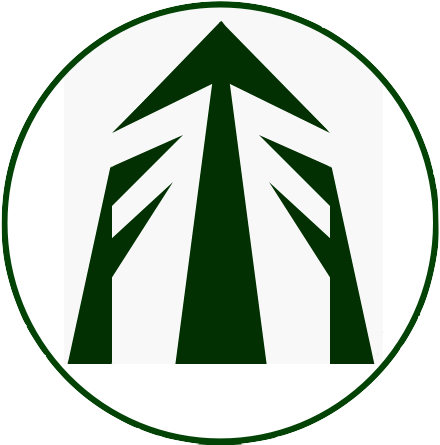Appearance Grades
These appearance grades are suitable for end uses such as furniture, joinery, fit-outs, mouldings, architraves, panelling and other decorative end-uses.
Species:
All New Zealand grown species
All grades:
Decay not allowed.
Stain not allowed beyond the surface (including sap stain and fillet marks).
At least 80% of the overall volume shall comprise lengths of over 1.8 m and all lengths shall be over 60 cm.
Distortion
- Bow maximum 40/1
- Crook maximum 200/1
- Twist minimal
- Cup 75/1
Splits not allowed. Shakes not allowed.
Timber must be dried to 20% moisture or below (i.e. at least fully air dried).
Incipient decay allowed only where no softness or punkiness is present.
Joinery grades
Clear Joinery grade
Not allowed: Knots, holes, voids, resin pockets, bark pockets, resin streaks, bark inclusion, skip, wane, want, pith, incipient decay, surface checks.
Select Joinery grade
Allowed: Fully intergrown clean knots, knot checks provided they do not exceed 1 mm wide. Minimal surface checks only allowed; these must not affect the overall visual appearance of the timber.
Not allowed: Loose knots, voids, holes, resin pockets, bark pockets, bark inclusion, skip, wane and want.
Feature Joinery grade
Allowed: Unlimited tight (intergrown and partially intergown) knots provided they do not exceed 50 mm width. Tight encased knots allowed where no larger than 25 mm wide. Knot checks allowed provided they do not exceed 2 mm width. Pith allowed, provided it is not wider than 5 mm. Surface checks are allowed provided they are not longer than 100 mm and are not wider than 2 mm. Pinhole allowed. Resin streaks allowed unless specified otherwise by the customer.
Panelling Grades
Clear Panelling grade
Not allowed on front face: Knots, holes, voids, resin pockets, bark pockets, bark inclusion, skip, wane, want, pith, incipient decay, surface checks.
Not allowed on the best face but allowed on the back face and up to half of the boards width from the back edges: Loose knots, checks, voids, holes, resin pockets, bark pockets, bark inclusion, skip, wane and want.
Select Panelling grade
Allowed on best face: Fully intergrown clean knots, knot checks provided they do not exceed 1 mm wide. Minimal surface checks only allowed; these must not affect the overall visual appearance of the timber.
Not allowed on the best face but allowed on the back face and up to half of the boards width from the back edges: Loose knots, checks, voids, holes, resin pockets, bark pockets, bark inclusion, skip, wane and want.
Feature Panelling grade
Allowed on the best face: Unlimited tight (intergrown and partially intergown) knots provided they do not exceed 50 mm width. Tight encased knots allowed where no larger than 25 mm wide. Knot checks allowed provided they do not exceed 2 mm width. Pith allowed, provided it is not wider than 5 mm. Surface checks are allowed provided they are not longer than 100 mm and are not wider than 2 mm. Pinhole allowed. Resin streaks and kino allowed unless specified otherwise by the customer.
Not allowed on the best face but allowed on the back face and up to half of the boards width from the back edges: Loose knots, checks, voids, holes, resin pockets, bark pockets, bark inclusion, skip, wane and want.
Finger-jointing Grades
Finger-jointing Clears grade
Not allowed: Knots, holes, resin pockets, bark pockets, bark inclusion, skip, wane, want, pith, incipient decay, surface checks.
Lengths shall be greater than 20 cm. At least 90% of the overall volume shall comprise lengths of over 30 cm.
General and Responsibilities
At least 95% of the consignment of graded timber shall meet the grade specifications above upon despatch.
For tallying volumes call dimensions shall be used.
| Call sizes (mm) | 25 | 40 | 50 | 75 | 100 | 125 | 150 | 200 | 225 | 250 | 300 |
| Actual dressed dry size (mm) | 19 | 35 | 45 | 70 | 90 | 115 | 140 | 190 | 205 | 240 | 290 |
Once despatched the seller shall not be responsible for any subsequent deterioration of condition of the timber or defects arising from further processing.
Farm Forestry Timbers reserve the right to revise our grading rules without notice. Grade revision 1.1 October 2013.
See Glossary for explanation of terms.
Disclaimer: While every effort is made to ensure the accuracy of the information provided on this site, Farm Forestry Timbers Society do not accept liability for any consequences arising from reliance on the information published. If readers have any doubts about acting on any articles they should seek confirming, professional advice.
 Farm Forestry New Zealand
Farm Forestry New Zealand Farm Forestry Timbers - Headlines
Farm Forestry Timbers - Headlines